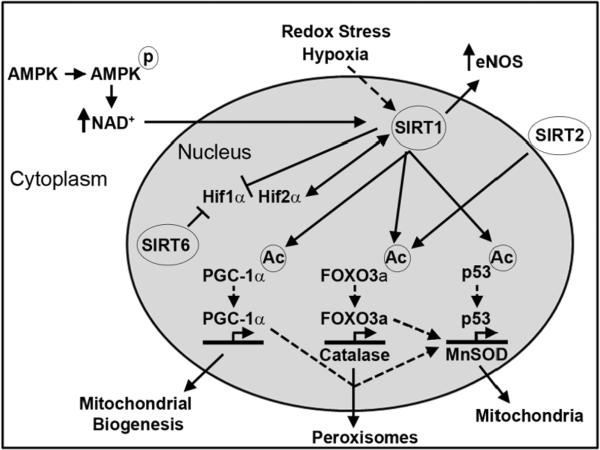Figure 1.
Of the non-mitochondrial sirtuins, SIRT1 is the most widely characterized deacetylase. In common with the other sirtuins, SIRT1 is activated by NAD+; levels of which can be increased following AMPK activation. Redox stress and hypoxia may, directly or indirectly, increase SIRT1 levels or activate its deacetylase activity (broken arrow). In terms of oxidative stress, one of the main roles of SIRT1 is to deacetylate and activate transcription factors involved in upregulating antioxidant proteins, such as MnSOD and catalase. In addition, SIRT2 has also been shown to activate the transcription factor FOXO3a through deacetylation. The activity of SIRT1, along with SIRT6, can inhibit HIF1α activity; however, SIRT1 has the opposite effect on HIF2α. Finally, SIRT1 deacetylates and activates the eNOS, leading to an increase in intracellular cardioprotective NO.

